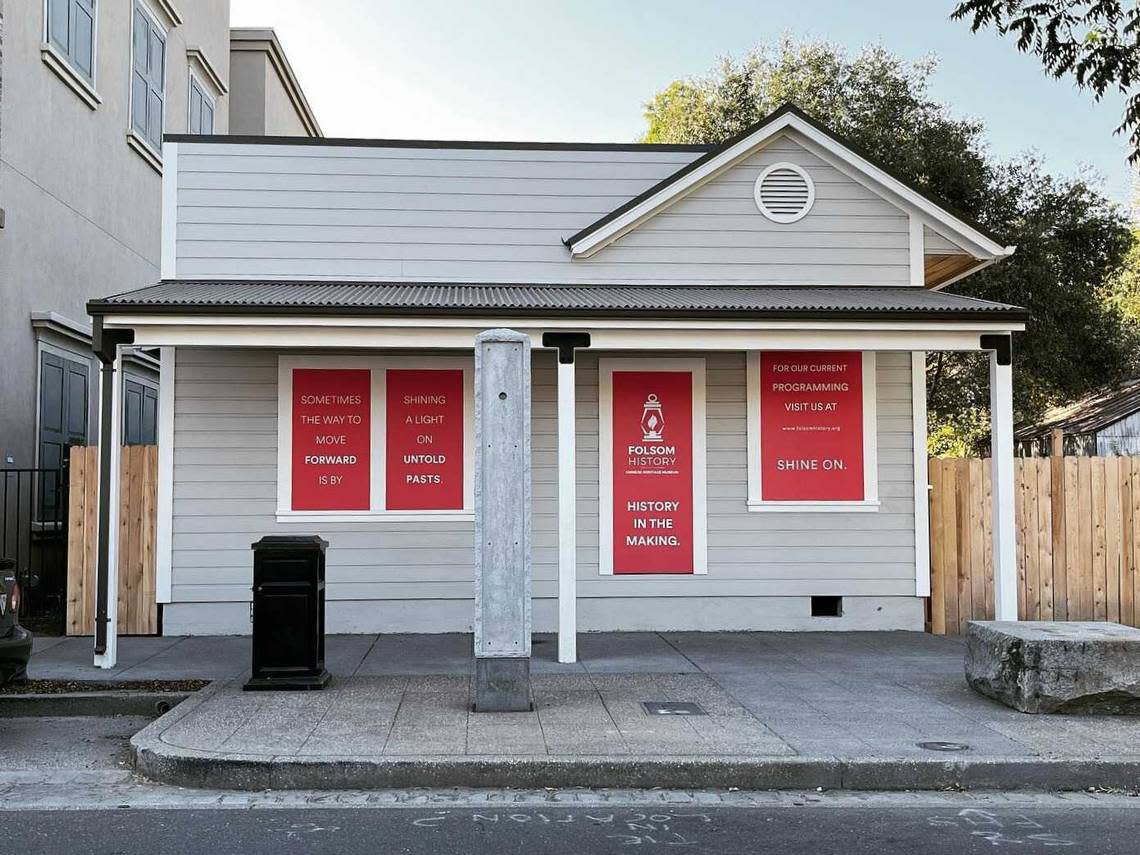The Chinese Heritage Museum in Folsom took a new direction after the pandemic. Where is it now?

At the Chinese Heritage Museum in Folsom, visitors will be able to mark their own families’ stories on an immigration timeline. One room will recreate the Gold Rush through the eyes of Chinese immigrants. And an immersive exhibit will bring a devastating fire that ravaged Folsom’s Chinatown to life.
The museum has been dedicated for the Howard Sr. and Mabel Chan House at 917 Sutter Street since it was purchased by the Folsom Historical Society, now Folsom History, in 2010. The building was nearly finished with restoration as of summer 2021, but the COVID-19 pandemic delayed progress, said Rita Mukherjee Hoffstadt, executive director of Folsom History, and compelled the organization to pursue a new direction for the museum.
The organization is now seeking around $600,000 to execute its concept plan and open the museum.
During the pandemic, the Folsom History Museum closed, as many museums across the country suffered from lockdowns and financial challenges.
“It kind of forced them to look at everything that they were doing and say, ‘Well, how can we change the appeal and interest of this institution that’s been around a long time but hasn’t really been reaching out and been part of the changes in Folsom?’” Mukherjee said.
And when it came to the Chinese Heritage Museum, Mukherjee said, Folsom History leadership decided that rather than just looking at the past, the museum was to look to the past “as a way of guiding what came next.”
The museum’s concept plan, completed in the fall of 2023, will include a reflective back garden and a transition space to segue into it from busy Sutter Street. Whereas previous exhibit designs for the museum were “a little more static” and traditional, Mukherjee said, the new plan aims to make the exhibits more dynamic and spans until the present day.
Joy Li, a Folsom resident who immigrated from China to the U.S. in 1993, said that the inclusion of more recent and contemporary elements would benefit the museum.
“If it can integrate some of the more recent in addition to what the history (is), it will be more interesting for the new immigrants,” Li said. “Basically, if you go into a museum, if there’s something that you can relate to more than something 200 years ago, that will make it more interesting.”
Folsom History has already spent more than $300,000 on acquiring and restoring the building and designing the concept plan, according to Mukherjee.
Greg Jung, vice president of the Chinese American Council of Sacramento and board chair of Folsom History, said some CACS board members were directly involved in the design and concept plan of the museum.
“A lot of people in the community were unaware of the contributions that the Chinese had made in this area from the mid-1800s going forward,” Jung said. “So the fact that there was a Chinatown in Folsom — new information for a lot of people.”
Jung said CACS is excited to see the museum come about, calling it “great recognition” for the Chinese community.
Folsom History is currently in the process of applying for grants and speaking with private foundations to secure funding.

